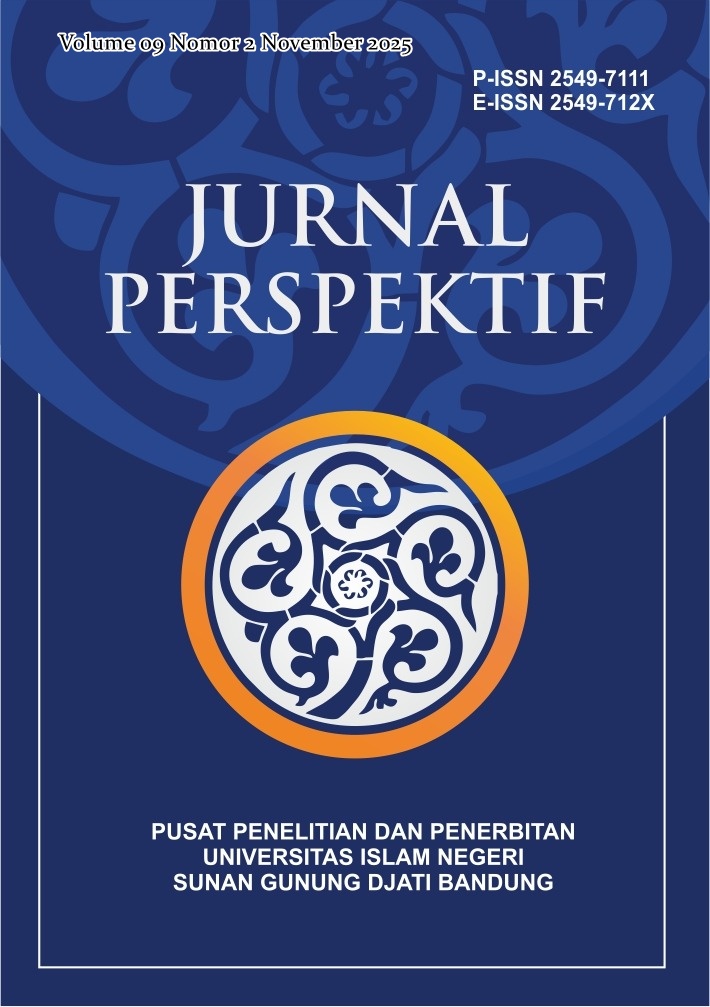Analyzing Mathematical Problem Solving and Critical Thinking Abilities Through Problem Based Learning at Junior High School Students
DOI:
https://doi.org/10.15575/jp.v9i2.361Keywords:
Critical Thinking, Problem Based Learning Model, Mathematical Problem SolvingAbstract
The purpose of this study was to determine the ability to solve problems and think critically through problem-based learning. The problem-based learning framework supports talent abilities by shaping students' thinking. This study involved students of class VIII-A SMP PGRI 4 Medan. The research approach used descriptive qualitative. SMP PGRI 4 Medan became the locus of the 2024/2025 research. This study used interviews and assessments of problem solving and critical thinking. The results showed that students' mathematical problem solving abilities averaged 65, which was moderate. Students' critical thinking averaged 66.9, which was moderate. The difficulties faced by students by comparing the results of the interview can be seen that students have difficulties in the four indicators of problem solving and critical thinking abilities. Where students ignore or do not recheck or draw conclusions and only concentrate on the solution procedure. This study shows that students have moderate problem solving and critical thinking skills when dealing with a system of linear equations of two variables.
References
Agustina, Hendra, & Abidin, Zaenal. (2022). Model Pembelajaran yang dapat Menumbuhkan Sikap Berpikir Kritis pada Siswa. Jurnal Ilmiah Wahana Pendidikan, 8(11), 153-159.
Arikunto. (2012). Prosedur Penelitian : Suatu Pendekatan Praktik. Jakarta: Rineka Cipta.
Arikunto. (2015). Prosedur Penelitian : Suatu Pendekatan Praktik. Jakarta: Rineka Cipta
Cahyo, Teguh S. S., & Murtiyasa, Budi. (2023). Analisis Kemampuan Berpikir Kritis Matematis melalui Pendekatan Problem Based Learning dalam Pembelajaran Matematika di SMP. Jurnal Pendidikan Matematika, 7(2), 1597-1610.
Eviyanti, C.Y., dkk. (2017). Improving the Student’s Mathematical Problem Solving Ability by Applying Problem Based Learning Model in VII Grade at SMPN 1 Bandar Aceh Indonesia. International Journal of Novel Research in Education and Learning, 4(2), 46-62.
Filsame, D. K. (2018). Menguak Rahasia Berpikir Kritis dan Kreatif. Jakarta: Grasindo.
FIP-UPI. (2007). Ilmu dan Aplikasi Pendidikan, Bagian 2 Ilmu Pendidikan Praktis. Bandung: IMTIMA.
Fisher, A. (2009). Berpikir Kritis Sebuah Pengantar. Jakarta: Erlangga.
Fitri, Sinditia, & Hidayati, Nita. (2024). Hubungan Kemampuan Berpikir Kritis Matematis dan Kemampuan Pemecahan Masalah Matematis Siswa SMA. Jurnal Matematika dan Pendidikan Matematika, 13(1). Hal 111-120.
Gibson, J. L., Ivancevich, J. M., & Donnely, J. H. (2018). Organisasi: Perilaku, Struktur, Proses. (Terjemahan) Edisi Delapan. Jakarta: Binarupa Aksara.
Harefa, Markus, & Surya, Edy. (2021). Beberapa Model Pembelajaran yang Efektif untuk Meningkatkan Kemampuan Pemecahan Masalah Matematika Siswa. Research Gate, (7-8).
Hasratuddin. (2013). Membangun Karakter melalui Pembelajaran Matematika. Jurnal Pendidikan Matematika PARADIKMA, 6(2). Hal 130-141.
Hasratuddin. (2018). Mengapa Harus Belajar Matematika?. Medan: Edira.
Ili, La, & Jusmaningsih, Dwi. (2022). Analisis Kemampuan Pemecahan Masalah Matematika melalui Pembelajaran Daring menggunakan Model Pembelajaran Berbasis Masalah. Jurnal Konseling dan Pendidikan, 10(1), 112-118 .
Isrok’atun & Rosmala, Amelia. (2018). Model-model Pembelajaran Matematika. Jakarta: Bumi Aksara.
Jannah, Lutnatul, dkk. (2023). Analisis Kemampuan Berpikir Kritis Melalui Model Pembelajaran Problem Based Learning Kelas IV SDN Pandeanlamper 03 Kota Semarang. Journal on Education, 5(4), 12265-12271.
Johnson, B. E. (2007). CTL, Contextual Teaching and Learning: Menjadikan Kegiatan Belajar Mengajar Mengasyikkan dan Bermakna. Bandung: Kaifa.
KBBI. (2016). Diakses pada tanggal 3 April 2024 dari https://kbbi.kemdikbud.go.id/entri/pendidikan.
Kusnandar. (2008). Langkah-langkah Mudah Penelitian Tindakan Kelas sebagai Pengembangan Potensi Guru. Jakarta: Rajagrafindo Persada.
Lestari K. E,. & Yudhanegara, M. R. (2018). Penelitian Pendidikan Matematika: Panduan Praktis Menyusun Skripsi, Tesis, dan Laporan Penelitian dengan Pendekatan Kuantitatif, Kualitatif, dan Kombinasi Disertasi dengan Model Pembelajaran dan Kemampuan Matematis. Bandung: Refika Aditama.
Mawardani. (2020). Praktis Penelitian Kualitatif Teori Dasar dan Analisis Data dalam Perspektif Kualitatif. Yogyakarta:CV. Budi Utomo.
Mentri Keuangan Republik Indonesia. (2023, 29 Maret). Memahami Bela Negara di Era Society 5.0. Di akses pada tanggal 3 April 2024 dari https://djpb.kemenkeu.go.id/kppn/lubuksikaping/id/data-publikasi/artikel/3100-memahami-bela-negara-di-era-society-5-0.html .
Moleong, L. J. (2007). Metodologi Penelitian Kualitatif. Bandung: PT. Remaja Rosdakarya.
Moleong, L. J. (2011). Metodologi Penelitian Kualitatif, Edisi Revisi. Bandung: PT. Remaja Rosdakarya.
Moleong, L. J. (2013). Metodologi Penelitian Kualitatif, Edisi Revisi. Bandung: PT. Remaja Rosdakarya.
Muis, M. (2020). Model Pembelajaran Berdasarkan Masalah: Teori dan Penerapannya. Gresik: Caremedia Communication.
Downloads
Published
How to Cite
Issue
Section
Citation Check
License
Copyright (c) 2025 NinaHayati NinaHayati NinaHayati

This work is licensed under a Creative Commons Attribution-ShareAlike 4.0 International License.
Authors who publish in Jourrnal Perspektif agree to the following terms:- Authors retain copyright and grant the journal right of first publication with the work simultaneously licensed under a Attribution-ShareAlike 4.0 International (CC BY-SA 4.0) License that allows others to share the work with an acknowledgment of the work's authorship and initial publication in this journal.
- Authors are able to enter into separate, additional contractual arrangements for the non-exclusive distribution of the journal's published version of the work (e.g., post it to an institutional repository or publish it in a book), with an acknowledgment of its initial publication in this journal.
- Authors are permitted and encouraged to post their work online (e.g., in institutional repositories or on their website) prior to and during the submission process, as it can lead to productive exchanges, as well as earlier and greater citation of published work (See The Effect of Open Access).



